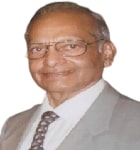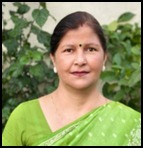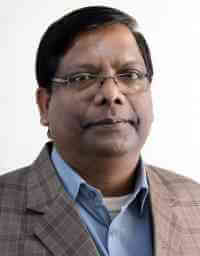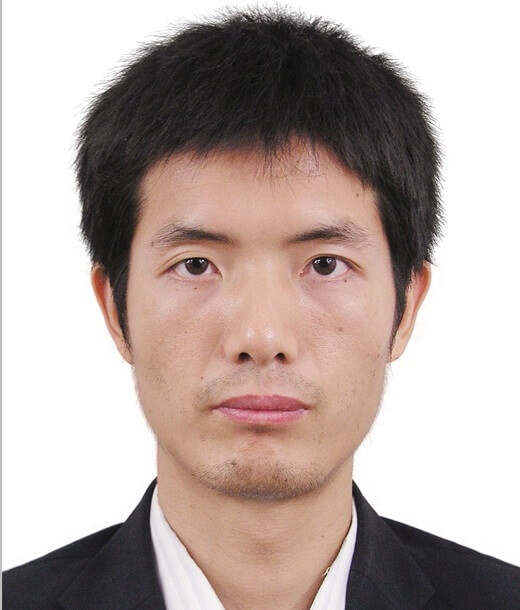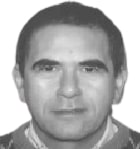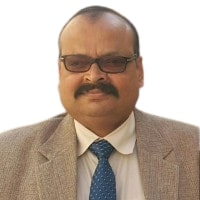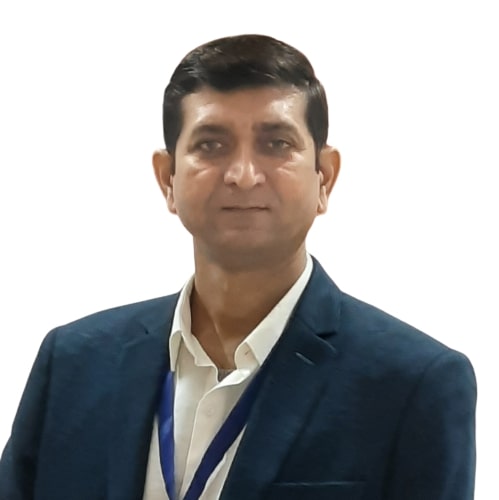Exploring Bismuth (III) Sulpha Drugs Schiff Base Coordination Complexes: Design, Synthesis, Structural, Spectroscopic Characterization, and Biological Evaluations

DOI:
https://doi.org/10.54060/a2zjournals.jase.47Keywords:
Antimicrobial, Bismuth (III) complexes, Schiff base, Spectral evidenceAbstract
The present study aimed to prepare and then evaluate the tetra and coordinated Bismuth (III) complexes [BiCl2 (L)] (LH = N, O donor Schiff base employed by the condensation of 1-acetyl-2-naphthol and 2-acetyl-1-naphthol using sulpha drugs as ligand) were derived by the reaction of bismuth (III) trichloride and sodium salt of an N, O donor Schiff base ligand and characterized. The authenticity of all the synthesized ligands and their Bi (III) complexes had been identified by microanalysis, various spectroscopic techniques like FT-IR, 1H NMR, and elemental analysis. The spectral evidence of the complexes has revealed the bidentate complexing nature of the Schiff base through phenolic oxygen and azomethine nitrogen atoms. The Schiff base ligand and Bismuth (III) complexes were assessed for antimicrobial activity. Assessment of antimicrobial activity against Gram-negative & Gram-positive bacteria and fungi has demonstrated that the complex (III) was more active than the Schiff base.
Downloads
References
C. Boulechfar et al., “Schiff bases and their metal Complexes: A review on the history, synthesis, and applications,” Inorg. Chem. Commun., vol. 150, no. 110451, p. 110451, 2023.
R. V. Gomathi, “Synthesis, characterization and Biological studies of complexes of 3-D transition metals with Schiff base derived from sulphadiazeneand 2-acetylenaphthalene,” International Journal of Recent Scientific Research, vol. 4, no. 1, pp. 94–97, 2013.
R. D. Hunashal and D. Satyanarayana, “One-pot synthesis of 3-(substituted phenoxymethyl)-6-phenyl/substituted phe-noxymethyl-1,2,4-triazolo thiadiazole derivatives as antimicrobial agents,” International Journal of Pharma and Bio Scienc-es, vol. 2, no. 4, pp. 183–192, 2012.
L. Dawara and R. V. Singh, “Microwave-assisted synthesis, characterization, antimicrobial, and pesticidal activity of bis-muth and antimony complexes with coumarin-based ligands,” J. Coord. Chem., vol. 64, no. 6, pp. 931–941, 2011.
R. R. Coombs, M. K. Ringer, J. M. Blacquiere, J. C. Smith, J. S. Neilsen, U. Yoon-Seo, J. B. Gilbert, L. J. Leger, H. Zhang, A. M. Irving, S. L. Wheaton, C. M. Vogles, S. A. Westcott, A. Decken and F. J. Baerlocher, “Palladium (II) Schiff Base Complexes Derived from Sulfanilamides and Aminobenzothiazoles,” Transition Metal Chemistry, Vol. 30, No. 4, pp. 411-418, 2005.
M. Jain, S. Nehra, “Nematicidal, Fungicidal and Bactericidal Activities of Manganese (II) Complexes with Heterocyclic Sul-phonamide Imines,” Metal-Based Drugs, Vol. 9, no. 1-2, pp. 53-60, 2002.
J. R. Eveland, K. H. Whitemire, “Complexes of bismuth (III) chloride with oxygen donor ligands. Structural characterization of BiCl3·3THF, BiCl3·diglyme and BiCl3·diethylcarbitol,” Inoraganica Chimica Acta., Vol. 249, no. 1, pp. 41-46, 1996.
I. M. Vezzosi, A.F. Zanoli, L.P. Battaglia and A. B. Corradi, “Synthesis and structural characterization of the molecular complex between bismuth trichloride and pyrene,” Journal of the Chemical Society, Dalton Transactions, no.1, pp. 191-193, 1988.
L. Dawara, S. C. Joshi and R. V. Singh, “Synthesis, Characterization, and Antimicrobial and Antispermatogenic Activity of Bismuth (III) and Arsenic (III) Derivatives of Biologically Potent Nitrogen and Sulfur Donor Ligands,” International Journal of Inorganic Chemistry, Vol. 2012, pp. 1-9, 2012.
K. A. Smith, G. B. Deacon, W. R. Jackson, E. Tiekink, “Preparation and Anti-Tumour Activity of Some Arylbismuth(III) Oxine Complexes,” Metal-Based Drugs, vol. 5, no. 5, pp. 295-304, 1998.
A. Tuba, Q. Bakhat, S. H. Hasnain, and S. Muhammad, “Pharmacological aspects of Schiff base metal complexes, ” A critical review,” Inorganic Chemistry Communications, vol. 150, no. 110449, 2023.
N. Yang and H. Sun, “Biocoordination chemistry of bismuth: Recent advances,” Coordination Chemistry Reviews,” vol. 251, no. 17-20, pp. 2354-2366, 2007.
K.S.O. Ferraz, N.F. Silva, J.G. Da Silva, L.F. De Miranda, C.F.D. Romeiro, E.M. Souza-Fagundes, I.C. Mendes, H. Beraldo, “In-vestigation on the pharmacological profile of 2,6-diacetyl pyridine bis(benzoyl hydrazone) derivatives and their antimo-ny(III) and bismuth(III) complexes,” European Journal of Medicinal Chemistry, vol. 53, pp. 98-106, 2012.
T. K. Grzeskiewicz, A. M. Banti, C. N. Hadjikakou, S. K. Kubicki, M., and I. I. Ozturk, “Synthesis, characterization, and biologi-cal properties of mono-, di- and poly-nuclear bismuth(III) halide complexes containing thiophene-2-carbaldehyde thio-semicarbazones,” Journal of Inorganic Biochemistry, vol. 237, no. 111987, 2022.
I.I. Ozturk, C.N. Banti, N. Kourkoumelis M.J. Manos, A.J. Tasiopoulos, A.M. Owczarzak, M. Kubicki, S.K. Hadjikakou, “Synthe-sis, characterization and biological activity of antimony(III) or bismuth(III) chloride complexes with dithiocarbamate ligands derived from thiuram degradation,” Polyhedron, vol. 67, pp. 89–103, 2014.
K. S.O. Ferraz, D. C. Reis, J. G. Da Silva, E. M. Souza-Fagundes, E. J. Baran and H. Beraldo, “Investigation on the bioactivities of clioquinol and its bismuth (III) and platinum (II, IV) complexes,” Polyhedron, vol. 63, pp. 28–35, 2013.
D. H. A. Ishak, K. K. Ooi, K.P. Ang, A. M. Akim, Y.K. Cheah, N. Nordin, S. N. B.i A. Halim, H. L. Seng, E.R.T. Tiekink, “A bismuth diethyldithiocarbamate compound promotes apoptosis in HepG2 carcinoma, cell cycle arrest and inhibits cell invasion through modulation of the NF-κB activation pathway,” Journal of Inorganic Biochemistry, vol. 130, pp. 38–51, 2014.
P. Foltinova, V. Sutoris, G. Blockinger, and L. Ebringer, “Antimicrobial effects of some benzothiazole derivatives,” Folia Mi-crobiol. (Prague), vol. 23, pp. 225– 228, 1978.
R.J. Grayer and J.B. Harborne, “A Survey of Antifungal Compounds from Higher Plants,” Phytochemistry, vol. 37, pp. 19-42, 1994.
R. Kumar, K. Seema, D. K. Singh, P. Jain, N. Manav, B. Gautam and S. N. Kumar, “Synthesis, antibacterial and antifungal activities of Schiff base rare earth metal complexes,” Journal of Coordination Chemistry, vol. 76, 2023.
W.L. Drew, A.L. Barry, R.O. Toole, and J.C. Sherris, “Reliability of the Kirby-Bauer disc diffusion method for detecting methi-cillin-resistant strains of Staphylococcus aureus,” Appl. Microbiol. Vol. 24, pp. 240–247, 1972.
D. Liu and K. Kwasniewska, “An improved agar plate method for rapid assessment of chemical inhibition to microbial pop-ulations,” Bull. Environ. Contam. Toxicol., vol. 27–27, no. 1, pp. 289–294, 1981.
B. D. N. W. Muanza, K. L. Kim, and L. Euler, “Antibacterial and antifungal activities of nine medicinal plants fromzaire,” International Journal of Pharmacognosy, vol. 32, no. 4, pp. 337–345, 1994.
M. O. N. Irob and W. A. Moo-Young, “Antimicrobial activity of annatto (Bixa Orellana) extract,” Inter J Pharmacognosy, vol. 34, no. 2, pp. 87–90, 1996.
A. A. E. Obeid, S. A. Shekeil, and J. A. Aghbari, “Anticancer, DNA cleavage, and antimicrobial activity studies of some new Schiff-base titanium (IV) complexes,” Journal of Coordination Chemistry, vol. 65, no. 15, pp. 2762–2770, 2012.
H. S. Yadav and G. L. Kumawat, “Synthesis, Spectroscopic, Biological, and Theoretical Evaluation of Novel Zirconium (IV) N, O Donor Amino Acid Schiff Base Complexes,” Chemistry Research Journal, vol. 8, no. 1, pp. 12–22, 2023.
J. B. Sen Saraswat, “Modes of coordination of 1,2 amino thiols inorgano tin(IV) complexes, as demonstrated by 119Sn, 15N and 13CNMR spectroscopy,” Polyhedron, vol. 5, no. 9, pp. 1449–1458, 1986.
R. C. Maurya and P. Patel, “Synthesis, magnetic and special studies of some novel metal complexes of Cu(II), Ni(II), Co(II), Zn[II), Nd(III), Th(IV), and UO2(VI) with schiff bases derived from sulfa drugs, viz., Sulfanilamide/Sulfamerazine and o-vanillin,” Spectrosc. Lett., vol. 32, no. 2, pp. 213–236, 1999.
S. Z. H. Chohan, Z. H. Chohan, and S. A. B. U. H. Mushtaq, “Antibacterial cobalt (II) and zinc (II) complexes of pyra-zine-derived Nno and Nnn donor Schiff-bases,” Pakistan Journal of Pharmaceutical Sciences, vol. 13, no. 1, pp. 21–27, 2000.
M. K. Sharma, M. Sharma, A. Singh, and R. C. Mehrotra, “Synthesis and Characterization of heterobimetallic Isopropoxides of Bismuth (III),” Indian Journal of Chemistry, vol. 40, pp. 1226–1228, 2001.
V. Gomathi and R. Selvameena, “Synthesis, characterization and biological activity of Schiff base complexes of sulfa drug with transition metals,” Asian J. Chem., vol. 25, no. 4, pp. 2083–2086, 2013.
N. L. Agoes and T. S. Burford, “Spectroscopic, Structural, and Mass Spectrometric Studies on Two Systematic Series of Di-thiabismuth (III) Heterocycles: Identification of Bismuthenium Cations and Their Solvent Complexes,” Journal of the Ameri-can Chemical Society, vol. 118, no. 13, pp. 3225–3232, 1996.
N. F. Di Bianca, G. Bertazzi, G. Alonzo, and T. C. Ruisi, “Studies on some antimony (III) complexes with tridentate Schiff base ligands,” Inorganica Chimica Acta, vol. 50, pp. 235–237, 1981.
M. H. Kosal, M. Dolaz, and S. Tumer, “Copper (II), cobalt (III), nickel (II), palladium (II), and zinc (II) complexes of the Schiff base ligands derived from 2, 6-diacetylpyridine and phthaldialdehyde,” Synthesis and Reactivity in Inorganic and Met-al-Organic Chemistry, vol. 31, no. 7, pp. 1141–1162, 2001.
D. M. Boghaei and M. Lashanizadegan, “Metal complexes of non-symmetric tetradentate Schiff bases derived from N-(1-hydroxy-2-acetonaphthone)-1-amino-2-phenyleneimine,” Synth. React. Inorg. Met.-Org. Nano-Met. Chem., vol. 30, no. 7, pp. 1393–1404, 2000.
I. I. Ozturk, K. Turk, A. M. Grzeskiewicz, M. Kubicki, C. N. Banti and S. K. Hadjikakou, “Heteroleptic six-coordinate bis-muth(iii) complexes with 2-acetylthiophene thiosemicarbazones: synthesis, characterization, and biological properties,” New Journal of Chemistry, no. 27, pp. 12779-12789, 2023.
S. M. Bedi, S. Sharma, and A. K. Varshney, “Synthetic, spectral and antimicrobial studies of bis(cyclopentadienyl)titanium(IV) complexes of semicarbazones and thiosemicarbazones,” Journal of the Indian Chemical Society, vol. 89, pp. 309–313, 2012.
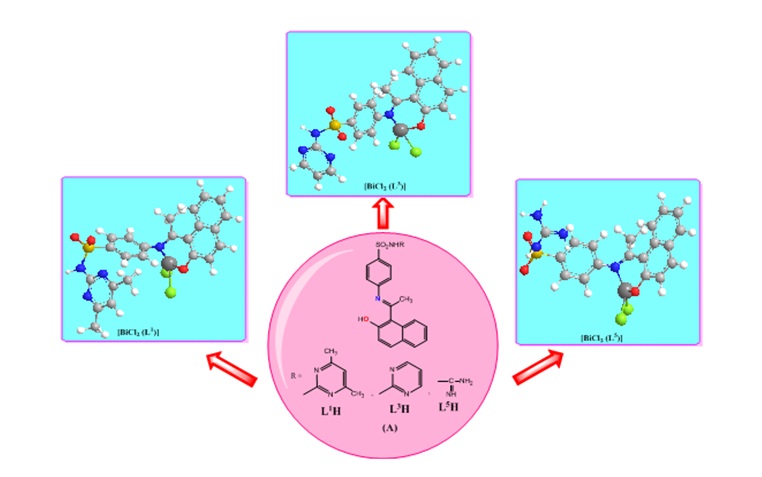
Downloads
Published
How to Cite
CITATION COUNT
Issue
Section
License
Copyright (c) 2021 Dr. Hari Shankar Yadav, Dr. Gopal Lal Kumawat

This work is licensed under a Creative Commons Attribution 4.0 International License.





